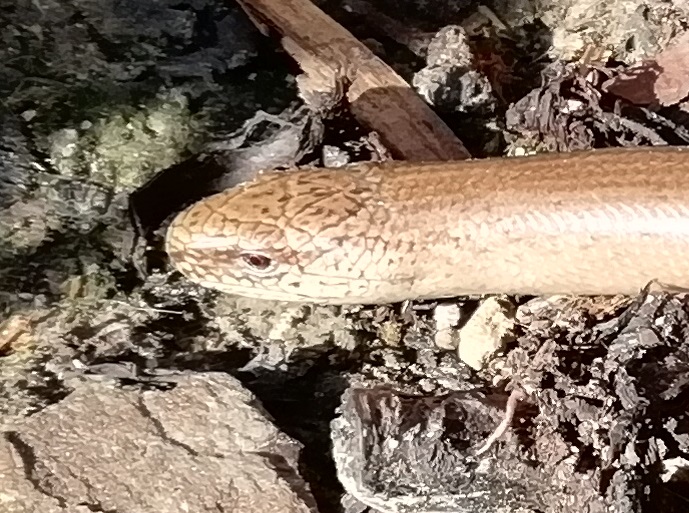It’s business as usual here at terra firma, albeit with all of us working remotely and finding new and intriguing ways to communicate design ideas and thoughts. We’re still busy delivering projects but drawings that used to take five minutes to scan and prepare are proving to be a little more challenging, with conversations on the phone that go along the lines of:
“See the tree in the top left corner, now down a bit, down a bit. Oh no! Blank screen! Help!”
Well, you get the picture…

There has been one aspect of working from home that has been intriguing. It’s suddenly having the time to notice the small things that are happening in the garden during lunch breaks.
Last week yielded a few new surprises, with one in particular that I’d like to share. It’s certainly been of interest to a project ecologist I’ve been working with.

Now, either she (I’m assuming it’s a she by the colour) has been living here for a while or has taken up residence in the quiet and secluded corner of the border – along with several other of our native animals. It surprises me as the garden is the local ‘cat super-highway’ and cats are known to prey on them.
Seeing a slow-worm up close has been an education so I left her undisturbed, sunbathing, and watched her quietly glide into a crack in the soil beneath the Rock Rose.

Five fascinating facts:
- Slow-worms love to eat small white slugs (great for the new seedling).
- The slow-worm is actually a legless lizard (not a snake) and can grow up to 50cm in length.
- Protected in the ‘UK under the Wildlife and Countryside Act 1981’ and Priority Species under the UK’s ‘Post-2010 Biodiversity Framework’.
- Slow-worms have a shiny appearance – males are a greyish-brown and females are brown with dark sides (some females also have a thin line down their back).
- Slow-worms can blink – or wink! Snakes cannot.
My next step was to report the sighting and suddenly keep a weather-eye out for feline hunters.
You can find a series of identification guides here: https://www.arc-trust.org/report-your-sightings
